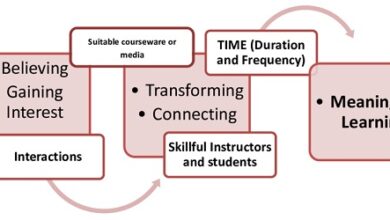Integral approach of teaching/characteristics/activities/roles
Integral approach of teaching
This method is characterized by focusing your attention on the content It arises as an attempt to explain the communicative approach made by Aquilino Sánchez to define the method more adequately. In this article we will describe the Integral approach of teaching.
All areas of human activity are related to language, therefore, language reflects the various components that make up the human being. The main idea is that the function of the language is to make possible and facilitate communication between the speakers of the same linguistic community. This communication implies interaction, and that interaction implies a knowledge of the linguistic elements and their use within that community. Part of that code is known as grammar.
This basic component (grammar) adds other non-formal elements that are intrinsic to it: the feelings that distinguish the human being, the physical space in which the text is produced (widely understood), the moment, etc.
The culture of the community of speakers also manifests a multitude of variations and nuances: “the rhythm, intonation, length, and order of the words in the sentences, the content of the words, the concepts they represent, etc. Cultural elements become so consubstantial with the language that it is practically impossible to separate one from the other ”. (Pérez, 1992)
The integral method tries to cover all the factors that make up the language (be they formal or informal). This principle governs everything that is done or used in the classroom, from materials to techniques. The idea is to include, not exclude.
Different Roles
Teacher role
The teacher’s primary role is that of an advisor. You must be understanding of the students and you must respond to the feelings of your students. With regard to correcting errors, you can correct them but without being threatening.
Role of the student
It is his responsibility to become independent from the teacher since he is expected to achieve security in learning.
Presence of grammar
Some aspects of grammar, phonetics, and vocabulary are worked on with the material that the students design.
Basic characteristics of Integral approach of teaching
- Its objective is to promote learning through the actual use of the language in the classroom and not only through the manipulation of linguistic units at their various levels of description.
- Linguistic exercises must always be at the service of communication, that is, subordinate to content.
- It is postulated that learning processes will necessarily include communication processes.
Activities of Integral approach of teaching
Theme: Talking to each other
Level: B1
General objective:
- Communicate in the target language.
- Identify grammatical structures.
- Recognize vocabulary.
Activity:
- The students choose a topic of their interest and begin to speak in their mother tongue, they converse with each other while the teacher writes what they say on the board to translate it. Once he translates it, he reads each of the sentences for the students to repeat. It is intended with this activity, that the students leave at the end of the class, speaking in the target language.
